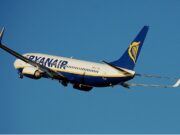“Critical medical factors,” including the use of antidepressants and first-generation antihistamines, may contribute to fatal accidents among general aviation pilots over age 70, according to a study by an international group of medical researchers.
The study, published in the February issue of the Aerospace Medical Association journal Aerospace Medicine and Human Performance, reviewed accident information in the U.S. National Transportation Safety Board database from 2003 through 2012 and identified 114 fatal accidents involving pilots between ages 70 and 92.
Accident information indicated that 17 percent of the pilots had taken first-generation antihistamines, which may have side effects including drowsiness, impaired thinking or blurred vision, and antidepressants.
“It is likely that in the elderly pilot population, antihistamines are used as a sleep medication because of their sedative effect,” the report said. “The problem is that these antihistamines reduce rapid eye movement sleep and impair performance. This problem in the elderly pilot population is underreported or underestimated.”
The second-most frequently used medications — found in 7 percent of the pilots — were antidepressants, which pilots were forbidden to use during the time period studied. The reported noted that the elderly face “an increased risk of adverse outcomes” from antidepressants.
In 13 percent of the accidents studies, the pilots had taken a combination of three or more drugs, the report said.
U.S. Federal Aviation Administration data indicate that in 2011, there were about 29,000 pilots over age 70; by 2015, that number had increased to 32,000. Under a 2016 law, pilots who hold Third Class medical certificates will be required to visit a general practitioner at least every four years; previous requirements were for more frequent visits to an aeromedical examiner.


